Finding a new TV is not an easy task with so much jargon and technical standards to get your head around like 4K, Ultra HD, HDR, etc. Choosing the best connected TV depends on your needs. Don't worry, because our buying guide is here to explain everything you need to know to choose the right connected TV.
Here is our commitment, to make sure that we provide the best user experience and content quality:
You can support us by using our links to make your purchases (at no extra cost to you)! This sometimes earns us a commission which allows us to remain independent. More about us
Our selection
"The LG OLED 55C1 produces fantastic 4K HDR images and performs almost as well as high-end OLED TVs for a significantly lower price."
"JVC has partnered with Amazon to create an excellent budget TV with the Fire TV operating system built in. With a price tag that puts…"
"It's an amazing TV overall. Whether you're watching your favorite shows during the day or watching movies at night, it looks great in any environment."
"The Sony AG9 stands out with top-notch picture quality. It's a stunning TV with incredible color, contrast and localized brightness."

The LG OLED 55C1 produces fantastic 4K HDR images and performs almost as well as high-end OLED TVs for a significantly lower price.
1 047 £ on AmazonThe LG OLED 55C1 offers better value and a more complete package with a consistently bright and detailed 4K HDR image in its 55-inch screen, backed by powerful processing. In addition to having an excellent OLED screen that allows for exceptional image quality, specifically, it can turn individual pixels on and off. It has an almost infinite contrast ratio and perfect black uniformity, making it a fantastic choice for watching movies in dark rooms.
The C1 also offers a sleek design, HDMI 2.1 for 120 Hz gaming, low input lag and a useful Game Optimizer menu. Aside from games, the new webOS interface is improved. That is, LG has updated its webOS system to 2021, and you get a full-featured smart hub to access all your apps instead of the banner at the bottom found in previous versions.
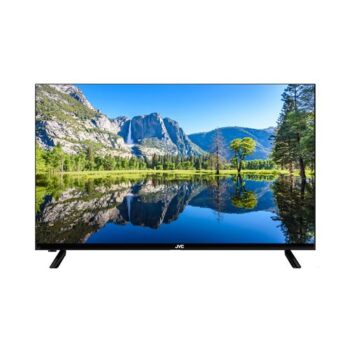
JVC has partnered with Amazon to create an excellent budget TV with the Fire TV operating system built in. With a price tag that puts it deep into budget territory. Fire TV Edition by JVC or JVC FD100 is here to make your dreams come true.
160 £ on DartyThe JVC LT-32 FD100 already stands out with a voice-activated remote. The interface is better than most cheap TVs and there are plenty of apps too, including Disney+. This model is 4K with decent HDR support, a 31.5-inch screen and good picture quality. However, avoid the 40-inch size unless you're short on space as it has lower brightness and contrast than the others.
Audio isn't too bad either and you also get four HDMI ports. In terms of usability, the Fire TV interface does a lot right. It's generally smooth enough to remain usable without being annoying.
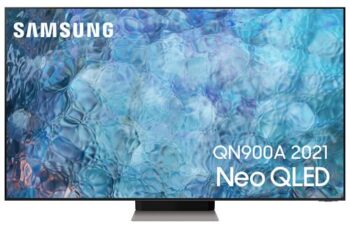
It's an amazing TV overall. Whether you're watching your favorite shows during the day or watching movies at night, it looks great in any environment.
4 799 £ on FnacThe best connected TV for streaming with an LED panel is the Samsung QN900A especially with its 65-inch screen, which also has the Neo Quantum 8K Processor and very nice design. The main advantage of LEDs over their OLED competitors is that they don't present a risk of permanent burn-in, so you can leave them on your favorite channel all day without having to worry about damaging the screen. The wide viewing angles, exceptional peak brightness and superb glare management of this TV make it a great choice for a bright living room.
When it comes to smart features, this TV does not disappoint. The interface is quick and easy to use. It offers a wide selection of streaming apps, so you're sure to find the streaming service of your choice. The remote is sleek with a solar panel on the back that charges the batteries. It also offers a wide selection of additional features for gamers, including support for FreeSync variable refresh rate (VRR) technology.

The Sony AG9 stands out with top-notch picture quality. It's a stunning TV with incredible color, contrast and localized brightness.
1 839 £ on FnacAny specific needs?
Your guide :
Rate this buying guide :By rating this buying guide, you are helping us to reward our best writers. Thank you!
| Editor's Choice | Inexpensive | Top of the line | Excellent choice | |

In accordance with our commitment, this buying guide does not contain any sponsored products. |
 8/10 |
 7/10 |
 9/10 |
 9/10 |
| OUR SELECTION |
LG OLED C1 55
|
JVC FD100 31.5"
|
Samsung Neo QLED 65
|
Sony Bravia AG9 65"
|
|
The LG OLED 55C1 produces fantastic 4K HDR images and performs almost as well as high-end OLED TVs for a significantly lower price.
|
JVC has partnered with Amazon to create an excellent budget TV with the Fire TV operating system built in. With a price tag that puts it deep into budget territory. Fire TV Edition by JVC or JVC FD100 is here to make your dreams come true.
|
It's an amazing TV overall. Whether you're watching your favorite shows during the day or watching movies at night, it looks great in any environment.
|
The Sony AG9 stands out with top-notch picture quality. It's a stunning TV with incredible color, contrast and localized brightness.
|
|
|
Screen
|
55-inch OLED
|
31.5-inch
|
65-inch
|
65-inch OLED
|
|
Display
|
HDR 4K bright and detailed
|
4K with HDR support
|
8K
|
HDR 4K
|
|
Design
|
Sleek design
|
Easy to use
|
Beautiful design
|
Elegant and luxurious
|
|
Technology
|
Up-to-date webOS system
|
Four HDMI ports
|
Wide selection of streaming applications
|
Android TV
|
|
Specificity
|
Game Optimizer menu
|
Sound
|
Quick and easy to use interface
|
Acoustic Surface Audio
|
Help us improve this table:
Report an error, request the addition of a feature to the table, or suggest another product. Thank you for your kindness!
We spend thousands of hours each year studying the major specialized websites, analyzing products of hundreds of brands and reading user feedback to advise you on the best products.
We are a product review company with a single mission: to simplify your buying decisions. Our research and testing helps millions of people every year find the best products for their personal needs and budget.
To support us you can: use our links to make your purchases (which often earns us a small commission), share our articles on social networks, or recommend our site on your blog. Thanks in advance for your support!
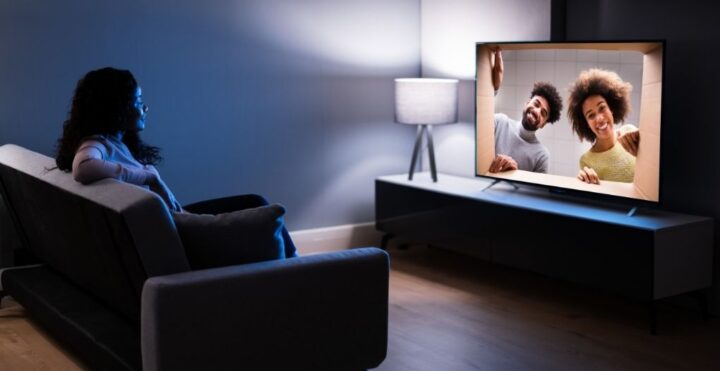
One of the main considerations for any new TV is simply how big you want it to be. The answer depends on the size of your budget and the physical space you plan to install it in.
You should also consider how far away you will be sitting while watching, the sets at the larger end of the scale will overwhelm your eyes if you are right in front of them. There's no one correct way to calculate the ideal screen size based on viewing distance, though manufacturers and experts offer some advice.
Just as with a laptop or smartphone, the resolution of a TV refers to the number of dots or pixels that make up the screen. The more pixels, the sharper the display, but the size of the screen matters, too.
Right now, this is an easy decision, as 4K displays with resolutions of 3840 by 2160 pixels have saturated the market. Some TV companies use the term "ultra HD" instead, but it's the same resolution, and just about every new TV today comes with that specification.
If you're really looking to save money and choose a smaller set under 40 inches, you might find a few budget "full HD" or 1080p models to choose from. At the other end of the market, you can see 8K sets that are still minimal at this point.
Connected TV displays today rely on two competing technologies, the ubiquitous LED LCD and OLED. Trying to say which is better can get tricky, especially because manufacturers add their own tweaks and technologies to each platform.
Plus, as both technologies develop, they naturally improve. Both types of displays use LEDs for lighting, but in different ways. LED LCDs use white light-emitting diodes, or LED pixels, as backlighting to form images via a liquid crystal display or LCD filter.
LEDs usually cover the entire screen, but cheaper sets sometimes limit them to the edges. LED LCDs are generally sharper than OLEDs and also offer more natural light control in scenes.
On the other hand, organic light-emitting diode, or OLED, displays ignore the backlight and instead use an electric current to illuminate the pixels one by one. This allows the display to respond more quickly. Also, because OLED displays completely turn off black pixels, LED LCDs simply dim them, they tend to have better contrast.
Manufacturers like Samsung, LG, and Panasonic use their own in-house connected TV software. Sony mainly favors the Android TV made by Google, and the budget brand TCL relies on Roku software.
You may find slight differences from platform to platform, Android TV and Roku have the best app selection, for example, but these variations are minor. Honestly, you'd be better off connecting a Chromecast, Apple TV, or Amazon Fire TV device to your TV rather than relying on the onboard software.
For example, while few TV manufacturers focus on sound quality, this feature will have a significant impact on your viewing pleasure. Another badge of approval we recommend you look for is Ultra HD Premium.
This is a set of standards, defined by the industry body UHD Alliance, that specifies a minimum level of quality in terms of color, refresh rate, brightness and audio.
For example, most displays now include high dynamic range, or HDR. This brings out details in the darkest and lightest parts of the image and improves the color gamut. While you may find competing HDR standards, such as HDR10 versus Dolby Vision, any HDR support can provide a more aesthetically pleasing display. You should also consider the refresh rate, literally the number of times the TV screen refreshes each second.
For example, a 60 Hz rate means the image resets 60 times per second. More refreshes will give you a sharper picture and less motion blur when watching fast-paced action and sports. Most connected TVs will also apply smart technology to reduce motion blur. You will find this type of effect under a name like motion or image interpolation.
However, the technology may or may not look good to your eyes, it can reduce the blur to the point where everything gets a sharp, cheap glow known as the soap opera effect. The good news is that these motion blur effects are optional, so you can turn them off.

These displays are backlit by an LED array directly behind the screen. This allows for localized dimming, which means that immediately adjacent areas of brightness and darkness can be displayed more effectively and greatly improves contrast.
LED TVs are also more energy efficient and capable of a wider color gamut than CCFL TVs. Due to the extreme cost of mounting these LED arrays, cheaper TVs typically use Edge-Lit LED displays over Direct or Full-Array LED displays.
But with LED Edge, the backlight LEDs are mounted along the edges of the panel. This arrangement allows for radically thin screens and offers higher contrast levels than CCFL, but cannot achieve the same picture quality as directly illuminated LED arrays.
However, they are much cheaper, which is why most LED TVs now use this technology.
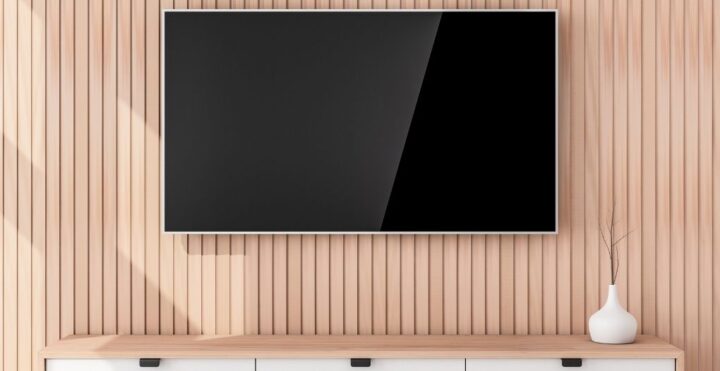
The backlighting of OLED Organic Light Emitting Diode assemblies is achieved by passing an electric current through an electroluminescent emissive film. This technique produces much better colors and higher contrast and also allows the displays to be extremely thin and flexible.
This is the Holy Grail display technology and LG, Sony, Philips and Panasonic have all adopted it in their flagship sets. Most of the latest and greatest TVs you can buy today feature OLED panels, as do high-end smartphones, including the iPhone 11 Pro.
These days, only Samsung's QLED panels offer a rival to this type of technology.

Quantum Dot is Samsung's big play in the LED TV space. With it, the brand claims to be able to produce more colorful images than LG and Sony while offering even brighter panels.
LG's Super UHD TVs all use a variant of Quantum Dot called Nano Cell, and Hisense makes a number of Quantum Dot TVs as well.
The main thing you really need to know is that QLED is a type of LCD panel technology. It's basically a difference in degree, rather than kind, from most other TVs currently available.
The basics of QLED technology are not hard to understand, even for non-TV types of technology.
A connected TV is also called a smart TV, thanks to internet connectivity, which means it can load apps and streaming services such as Netflix, Hulu and Amazon Prime Video, although not all of them are the same.
However, different TV manufacturers have their own proprietary smart TV platforms, which vary in usability, speed, search quality and the type of app support available. Some may lack Disney Plus, for example, or have a more streamlined layout, while others may have superior voice search, for those who plan to bark commands rather than click on them.
On the other hand, the main problem with connected TV is the installed operating systems, which often come across as very limited, full of bugs and inflexible to technological changes.
TV operating systems can lack the fluidity and performance of a box. Streaming media players are also a great complement to an older TV that may have aging software or lack streaming apps altogether, and the same goes for computer monitors that tend not to have their own apps.
To be clear, streaming boxes and dongles work exactly the same way. They plug into an HDMI port on your TV, are powered by a wall outlet or sometimes the TV's own USB port and connect to your Wi-Fi network to stream content, they only differ in physical appearance.
However, timing and picture quality issues are common. Due to natural fluctuations in network speed and quality, viewers may experience sync issues.
It's true that you don't need a connected TV to stream Netflix movies or YouTube videos to your screen. The best streaming devices can deliver these services and more to an older HDTV, or even a newer 4K TV.
But, it's worth noting that these streaming devices rarely offer more features than current connected TVs. In fact, all device manufacturers have the same interface and app selections available in their respective smart TVs.
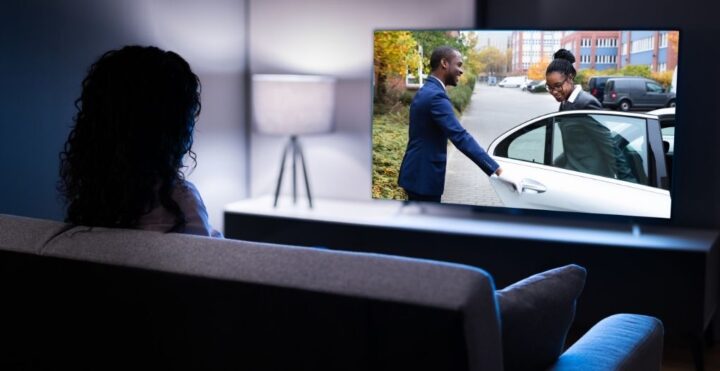
Simple programming
We've already explained how connected TVs are ideal for a great entertainment experience. But they can also serve as a web browser. So if you're searching the Internet with a friend or spouse and don't feel like crowding around a computer, you can do it from your TV. You can also update your social networks and perform other tasks that you would traditionally need a computer for.
Decluttering
A smart TV not only provides a better entertainment experience, but it also allows you to declutter your entertainment center. With a connected TV, you can ditch the streaming device, watch movies by purchasing them from apps, and maybe even reduce your pay TV bill if you can stream your favorite content.
Reliability
While streaming devices can help turn a non-smart TV into a smart TV, they are generally much less reliable than a quality connected TV. This is especially true if you're connecting to the Internet wirelessly, as lost Wi-Fi signals and buffering can hurt the experience. Simply put, connected TVs are better overall products that can hold Wi-Fi signals, providing a more reliable entertainment experience.
Ease of use
Connected TVs are as easy to install as they are to use. As far as installation is concerned, all you have to do is plug it into the wall and connect it to your home internet. Once everything is set up, it's as easy to use as a standard TV or streaming device.
Smartphone compatibility
Even though connected TVs come with remotes, one of the advantages of the current generation is their compatibility with smartphones. Simply downloading an app can put control of the connected TV in the palm of your hand via your cell phone. So forget about searching for the remote, the TV is easier than ever to control from your phone.
In our opinion, the best brands of Connected TVs in 2022 are :
Samsung, a South Korean company that is one of the world's largest producers of electronic devices. Samsung specializes in producing a wide variety of consumer and industrial electronics, including home appliances, digital media devices, semiconductors, memory chips and embedded systems. Arguably, currently, it has become one of the most recognizable names in technology.
Sony Corporation is one of the most recognizable names in consumer electronics. Since its founding shortly after World War II, Sony has released a series of groundbreaking products, including the transistor radio, the Trinitron television, the Betamax VCR, the CD player, the Walkman portable cassette player, and the PlayStation game console. Sony is ranked among the best in sound enhancement in all their designs.
LG Electronics is a core company of the South Korean conglomerate group LG, alongside LG Chem, founded in 1958. LG Electronics is a global innovator in technology and consumer electronics with a presence in nearly every country and an international workforce of more than 75,000. LG is a leading manufacturer of consumer and commercial products ranging from televisions, appliances, air solutions, mobile devices, monitors, service robots, automotive components and its premium brands LG SIGNATURE and smart LG ThinQ are household names around the world.
JVC is a wholly owned subsidiary of JVCKENWOOD Corporation. JVC is a leading developer and manufacturer of sophisticated audio and video products that use superior technologies to deliver high-quality sound and images. JVC is among the top manufacturers offering professional electronics products and distributes a full range of broadcast, professional, presentation and security equipment.
TCL is a fast-growing consumer electronics company and a leading player in the global television industry. Founded in 1981, it now operates in more than 160 markets worldwide. TCL is a leading specialist in the development and manufacture of consumer electronics products ranging from TVs, audio products and smart home.
The diagram below will help you to get an idea of the typical prices for each price range (entry-level, mid-range and high-end).
However, more expensive does not necessarily mean better.
We therefore advise you to always consult our ranking before deciding, rather than blindly relying on price ranges.
Surf the web
You can do it on your phone, your video game console and even your watch, so why shouldn't you be able to surf the web on your TV? Most modern connected TVs come with a built-in web browser and it works pretty much the same way as the one on your smartphone. Sure, it's not the smoothest experience in the world, but it's capable enough for a quick Google when your phone is out of range.
Launch your game
Many popular mobile games like Crossy Road and Angry Birds have been redesigned to work with modern connected TVs. Because they were originally designed for short, simple gaming sessions, they work well as quick breaks between binge sessions of your favorite TV shows. To start playing games on your smart TV, simply load up the TV app store and go to the Games section. Download the game of your choice and you'll be able to launch it in the same way as any other app on your connected TV.
Customized screen saver
For example, an Android TV comes with a native screensaver feature (Backdrop). Apart from that, the free Photo Gallery and Screensaver app, offers in-app purchases. The app is specially designed for Android TV and brings all the screensaver features you've always wanted on a larger TV screen. You can choose your photos from the internal storage, change the aspect ratio, apply a transition effect and much more. And the best part is that thanks to this application, you can even connect your Google account and it can extract your photos and display them as a screensaver. To sum up, Photo Gallery and Screensaver is one of the best Android TV apps.
Easy access and more choices over broadcasting
Thanks to your connected TV, you will have access to Netflix, Stan, Amazon Prime Video and potentially even Foxtel Now. This gives you access to a whole new world of popular movies and shows that you can watch entirely on demand. That means no more consulting the TV guide.
Learn
There is no shortage of educational apps available on connected TVs, from language courses to online classrooms to lecture series like the popular TED Talks. Add to that the slew of educational videos available on YouTube, and you have a veritable assortment of cranial cuisine to feast on while relaxing on your couch.
A connected TV is essentially any TV has Internet capability, which means it can load applications and streaming services such as Netflix, Hulu and Amazon Prime Video.
People tend to choose the size of their flat panel TV based on the amount of space they have, this is not necessarily wise. Flat TVs take up a lot less space than you think, so your new TV may end up a foot or two further from your viewing position, making the picture smaller. Plus, with high definition, you can have a larger screen and the same viewing distance without worrying about seeing inherent source defects. The lack of noise from a 4K TV means that the ideal distance to sit from the screen is three to four times the height of the TV.
If you don't plan to connect to a sound bar or separate surround sound system, you may want to think more carefully about audio performance of your set. Look for a display that can go as loud as you'll need it to without distortion or clicks. Consider how the dialogue sounds and how much low-end rumble the bass is capable of.
With so many options on the market, it can be tempting to pick a connected TV at random. However, they're not all the same, so it's important that you do some research first to make sure you're getting all the features you want. Some connected TVs will come with different apps and others will allow you to stream from your smartphone, as mentioned. Others also have a more user-friendly operating system, so it all comes down to what you are looking for in your next TV.
Every month we help more than 1 000 000 people buy better and smarter.
Copyright © 2022 - Made with ♥ by buyingbetter.co.uk
Your reviews and buying guides 0% advertising, 100% independent!